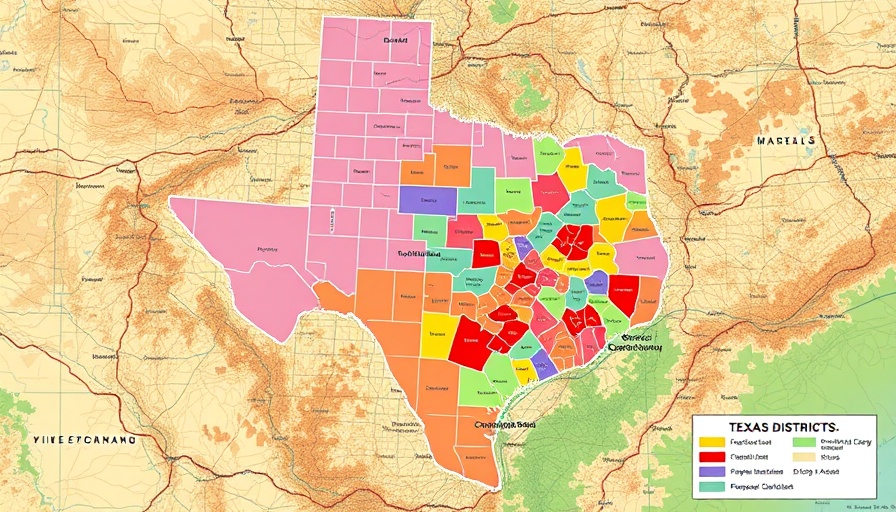
Understanding the Proposed Congressional Map in Texas
As the Texas Legislature gears up for the upcoming election cycle, lawmakers have put forward a proposed congressional map that could reshape the political landscape across the state. This critical development warrants scrutiny, especially given Texas's significant role in national politics and its diverse demographic makeup.
Why the Proposed Map Matters
The proposed congressional map carries potential implications that extend beyond mere political boundaries; it represents a strategic tool that could alter voter representation and influence future policy outcomes. As the state's population continues to grow—and diversify—it is crucial for the congressional districts to accurately represent the shifts in demographics. Understanding how this map could change representation for various communities is essential for informed civic engagement.
Key Features of the New Map
Lawmakers have emphasized that the new map is designed to reflect the state's demographic changes, particularly in urban areas like Austin and its surroundings. With notable population growth in these regions, adjustments could create new districts that enhance representation for underrepresented groups. However, critics caution that the division of certain communities might dilute their voting power, raising concerns about fair representation.
Community Reactions: Voices from Austin
Local voices have emerged to express both support and concern over the proposed map. Proponents argue that it is a necessary evolution, while opponents fear it could disenfranchise certain communities. Local activist groups have begun organizing town halls to educate citizens about the implications of these changes and to encourage public input. This grassroots engagement exemplifies the type of civic diligence that is crucial for ensuring a fair electoral process.
Potential Challenges and Legal Battles
As the proposal moves through the legislative process, legal challenges could also arise. Similar efforts in the past have led to lawsuits asserting that maps have been drawn to favor one party over another, often referred to as gerrymandering. Legal experts believe that the current proposal could face scrutiny from both sides, especially if it is perceived as extracting undue advantage for particular political groups. Understanding the legal landscape surrounding this issue offers insight into potential roadblocks ahead.
The Future: Trends and Predictions
Looking forward, the implications of Texas's proposed congressional map could resonate far beyond the state lines. As Texas continues to demonstrate significant electoral influence, the ramifications of voting patterns resulting from these changes could be felt nationwide. Political analysts predict that if the map leads to tighter races in certain districts, it could indicate a shift in party power dynamics, potentially affecting upcoming national elections.
Engaging with the Community on Redistricting
For citizens interested in contributing to the conversation, participating in community discussions and local forums is encouraged. Engaging with local leaders, attending meetings, and staying informed about legislative developments are essential steps toward active citizenship. Sharing insights and concerns with elected representatives can ensure that diverse voices are heard in the redistricting process.
Conclusion: The Importance of Civic Engagement
The proposed congressional map's implications on representation in Texas underscore the importance of community engagement. As voters prepare for what could be significant changes in their electoral landscape, it is essential to stay informed and involved. Whether through attending community events or voicing opinions to lawmakers, Texans have the power to influence the outcome of this critical issue. Stay connected with local news in Austin to keep abreast of these developments and participate in shaping the future of your community.
 Add Element
Add Element  Add Row
Add Row 



Write A Comment